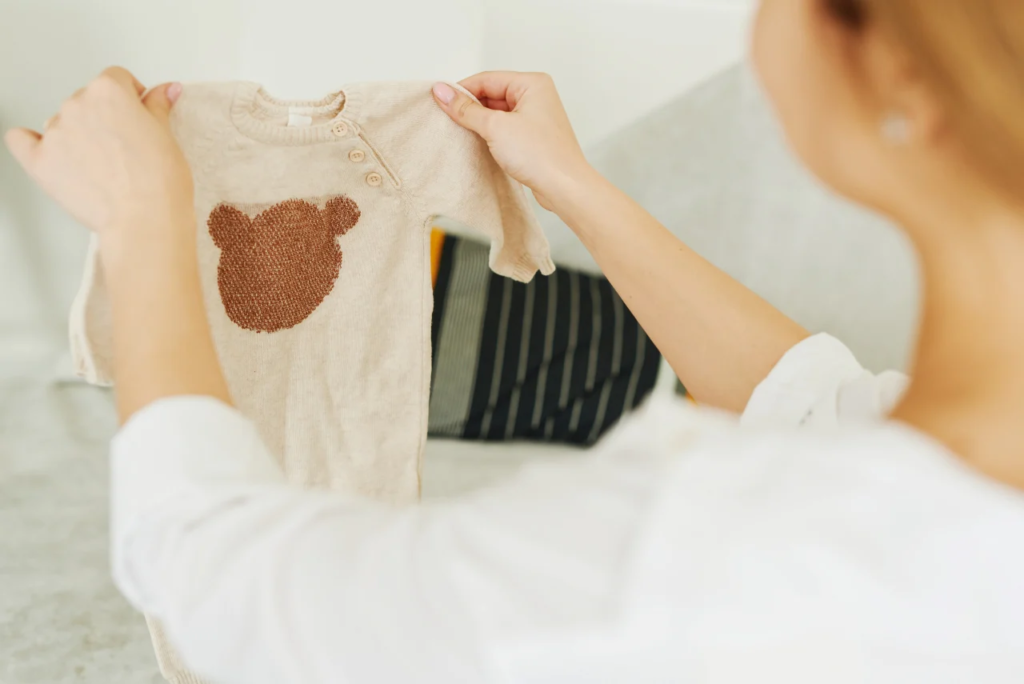Introduction
Cloth selection for newborns and young children is a crucial aspect of parenting. Ensuring their comfort and well-being, especially with regards to the ever-changing climate, is of paramount importance. In this article, we will guide you through the process of selecting appropriate clothing for your little ones based on different weather conditions and seasons.

Understanding Your Child’s Needs
1. Recognizing Individual Comfort Levels – Cloth selection
Every child is unique, and their tolerance to various temperature ranges may differ. Paying attention to your child’s cues is crucial. Are they too hot or too cold? Signs of discomfort may include fussiness, excessive sweating, or shivering. By observing your child’s reactions, you can gauge whether they need adjustments to their clothing.

2. Layering for Versatility
Layering is a fundamental strategy when dressing kids for varying climates. It involves adding or removing clothing layers as temperatures fluctuate throughout the day. This approach allows you to adapt to changing conditions, ensuring your child remains comfortable. For instance, on a chilly morning that warms up in the afternoon, you can remove a layer to prevent overheating.
Dressing for Warm Weather – Cloth selection
3. Lightweight Fabrics
In hot summer months, it’s essential to choose lightweight and breathable fabrics like cotton for your child’s clothing. These materials allow air circulation, which helps prevent overheating and keeps your child cool and comfortable. Cotton is also soft on the skin, minimizing the risk of irritation.
4. Sun Protection
Protecting your child from the sun’s harmful UV rays is paramount in warm weather. Choose clothing with built-in UPF (Ultraviolet Protection Factor) to shield your child’s delicate skin. Additionally, wide-brimmed hats can provide extra protection for their face and neck. Don’t forget sunscreen on exposed areas like hands and legs.
Preparing for Cold Weather – Cloth selection
5. Insulated Layers
When the temperature drops in colder seasons, it’s crucial to use insulated layers like fleece or wool to keep your child warm. These materials trap heat close to the body, providing insulation. Ensure your child’s extremities are covered with mittens for hands and boots for feet to prevent frostbite.
6. Outerwear
Invest in a good-quality winter coat for your child to protect them from the cold. Look for coats that are both insulated and waterproof, as this will keep them warm and dry during rainy or snowy days. Layering is still essential, so consider adding a fleece or sweater underneath the coat for extra warmth.
Transitioning Between Seasons -Cloth selection
7. Spring and Fall Clothing
Transitional months can be challenging to dress for, as temperatures can vary widely. A practical approach is to mix and match clothing from both the warm and cold weather wardrobes. This allows you to adapt to changing temperatures throughout the day. For example, you can pair a long-sleeved shirt with shorts for a comfortable outfit that suits both cool mornings and warmer afternoons.
Special Considerations – Cloth selection
8. Sleepwear
Selecting appropriate sleepwear is crucial for your child’s comfort at night. Ensure that the chosen sleepwear matches the room temperature. In hot weather, opt for lightweight pajamas made of breathable materials. In contrast, during colder nights, choose warmer options like fleece or flannel to keep them cozy.
9. Allergies and Sensitivities
Some children may have allergies or sensitivities to certain fabrics. It’s essential to be aware of any specific sensitivities your child may have and select clothing made from hypoallergenic materials if necessary. Hypoallergenic fabrics are less likely to cause skin irritations or allergic reactions.
In summary, selecting the right clothing for your child based on the climate involves a combination of understanding their individual comfort levels, using appropriate fabrics, and layering effectively. By paying attention to these considerations, you can ensure that your child stays

